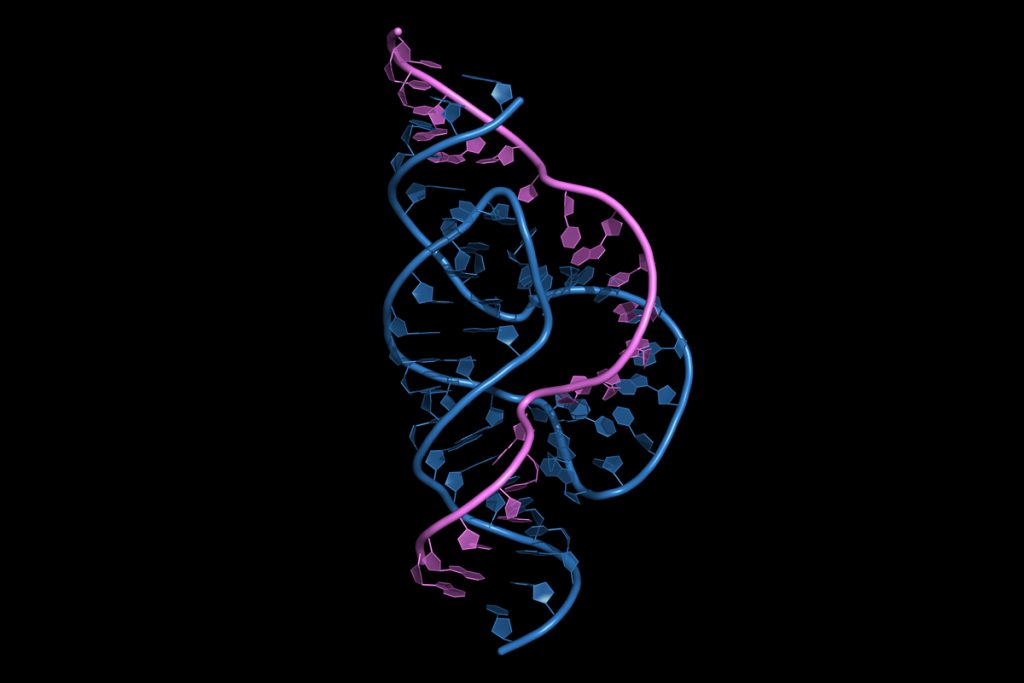- Research
-
YOU ARE
- Community member
- Future Student
- Student
- Professor
- Alumni
- Media
- Guidance counsellors
- INRS retiree
- Contact Us
- Newsroom
- Careers
- FR
-
Studies
We teach the next generation of researchers to develop scientific, social, and technological innovations.
-
Research
We find solutions through interdisciplinary research and industry or public and community partnerships.
-
INRS
We play an active role in Québec's economic, social, and cultural development.
Québec research team uses artificial intelligence (AI) to study the structure of RNA in the hopes of harnessing its functions.

The genetic role of ribonucleic acid (RNA) is well known—it transfers information from deoxyribonucleic acid (DNA) which is then transformed into a protein. However, this molecule may also have protein-like functions depending on its three-dimensional structure. Professor Jonathan Perreault of the Institut national de la recherche scientifique (INRS) is collaborating with Concordia University professor Nawwaf Kharma to understand how complex RNA structures work.
The two researchers are working with a special computer program that allows them to replicate realistic RNA to study the complex functions of this molecule in the human body.
Professor Perreault, an expert in microbiology and biochemistry, compares RNA to a paper photocopy of the genetic book that is DNA. “The photocopy that carries the information needed for protein synthesis can also be used as a paper airplane—the information is retained, but the form itself performs a function too,” he explained.
The team is primarily focused on RNA molecules that act as accelerators for biochemical reactions in the body. These molecules, which are called ribozymes, are able to self-fold and even self-cleave, like a dotted line on a sheet of paper. This cleavage can be used to achieve complete degradation of the RNA molecule or allow for use of the resulting parts in several different ways.
RNA computing
This project is using the cleavage in logic circuits. “As in a computer program, the cleavage produces a segment of RNA that is considered an output. Conversely, a small fragment of RNA can be used as an input. It would be a bit like adding a Post-it note to our paper that will either inhibit or activate cleavage,” explained Perreault.
In his collaboration with Kharma, he is testing even more complex functions, for example three inputs for the RNA to produce its output. This type of scenario could be used with cancer markers.
“One could imagine that when all three inputs are present at the same time, we’re dealing with a cancer cell; otherwise it would be another cell type.”
Jonathan Perreault, expert on ARN molecules
Specifying these functions manually would require a lot of trial and error, so the team uses the computer. “We give it the structure of the RNA and the function we want. The computer then has the latitude to change parts of the text that serve as instructions for self-folding that will achieve the expected behaviour,” Perreault added.
Eventually, the team hopes to obtain ribozymes that communicate when the output of one RNA becomes the input of another. There are still a number of challenges to overcome before such complex programs can be achieved, but the results so far are encouraging.
We suggest you to read
You may also like

November 25, 2021
Biodegradation of short-chain PFAS

November 25, 2021
Philippe Constant: Supporting the Development of Citizen ScienceShare

